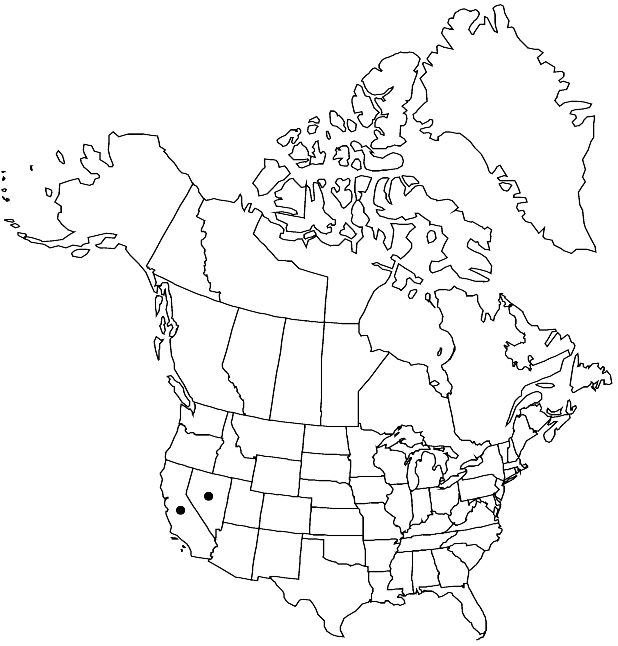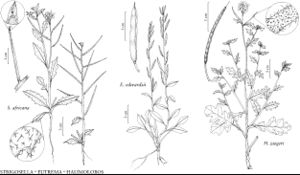Halimolobos jaegeri
Harvard Pap. Bot. 1: 46. 1993.
Perennials. Stems erect to ascending, often paniculately branched distally, 1.5–7.5 dm, trichomes sessile or subsessile. Basal leaves absent on older plants. Cauline leaves petiolate or (distal) sessile; petiole 0.3–2 cm; blade oblanceolate or lanceolate to obovate, (1.5–)3–8(–11.5) cm × (7–)15–35(–46) mm (smaller distally), base cuneate, margins coarsely dentate to shallowly sinuate, surfaces with stalked to subsessile trichomes. Racemes slightly to considerably elongated in fruit. Fruiting pedicels divaricate or slightly ascending, (3–)4–9(–12) mm. Flowers: sepals slightly spreading, 2–4 × 0.8–1.5 mm; petals (slightly spreading), spatulate or oblanceolate, (3.5–)4.5–6 × 1–1.5 mm, claw obscurely differentiated from blade, to 1.5 mm; filaments spreading, 3.5–6 mm, equal to or longer than petals; anthers 0.7–1 mm. Fruits divaricate or slightly ascending, curved or straight, torulose, linear, terete, (1–)1.5–2.6 cm × 0.6–0.9 mm; ovules 28–38 per ovary; style (1–)1.5–2.2 mm. Seeds uniseriate, 0.9–1.2 × 0.5–0.6 mm.
Phenology: Flowering early Jun-late Aug.
Habitat: Limestone cliffs, canyon walls, granitic slopes, rocky outcrops, crevices of volcanic cliffs
Elevation: 1300-2400 m
Distribution

Calif., Nev.
Discussion
Halimolobos jaegeri is known in California from Inyo and San Bernardino counties and in Nevada from Esmeralda and Nye counties.
Selected References
None.
